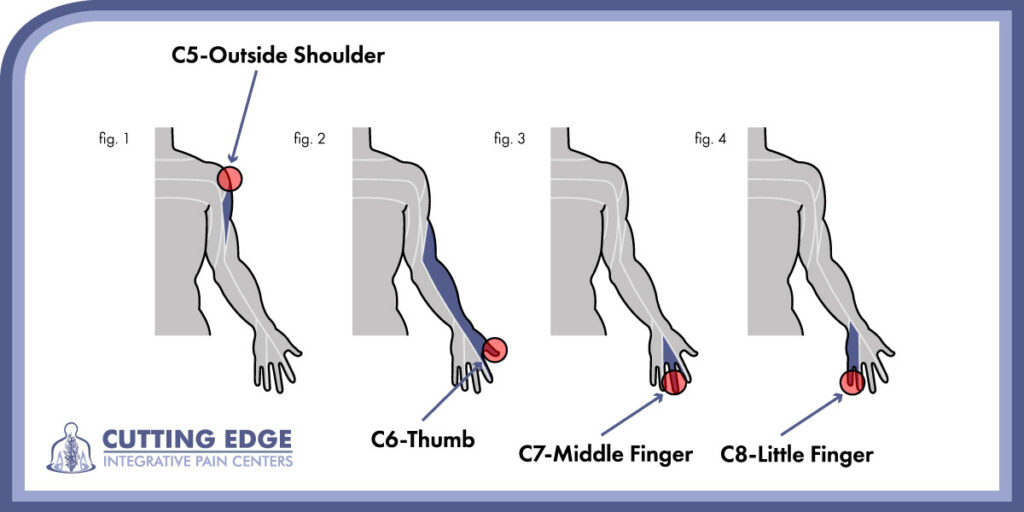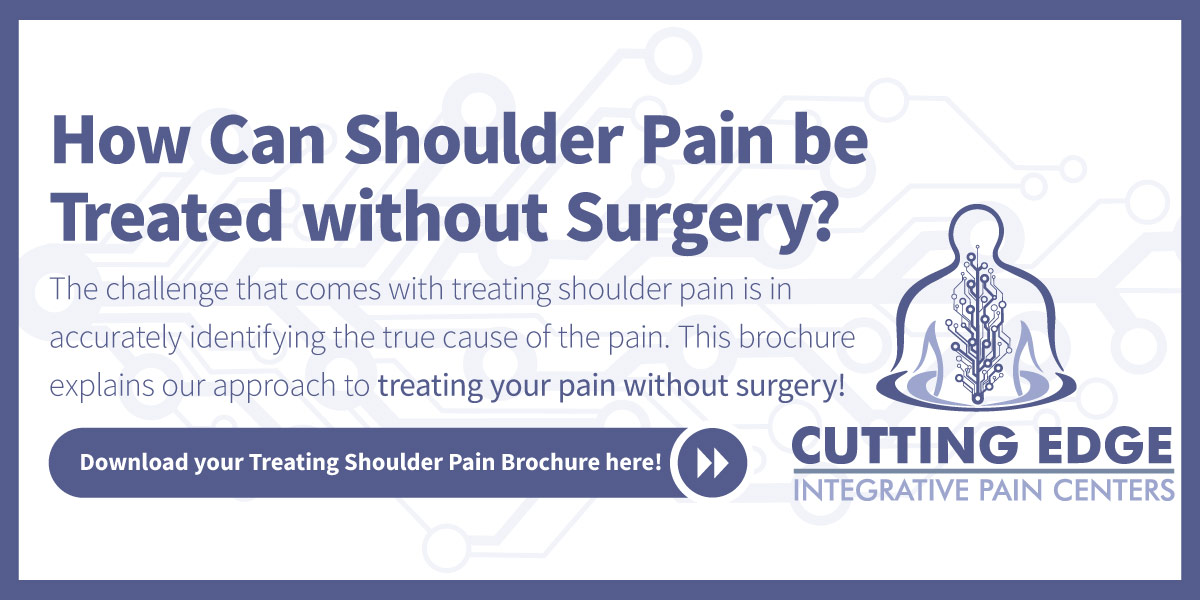When it comes to treating pain, knowing you have a problem is the first step in solving it. If you are a pain patient, you can go to the doctor or schedule a telemedicine appointment. You have options for treatment and diagnosis, but today we want to tell you about one you may be less familiar with; self-diagnosis is an alternative that you may have heard of, but are unsure of how it works, so let’s talk about it.
Self-diagnosis is, at times, a controversial topic within medicine, with most physicians recommending against it (we’ve all heard of people diagnosing themselves with rare conditions after reading a description on WebMD, right?), but when patients are armed with proper information, there are ways they can accurately diagnose their own pain.
Learn the Benefits of Geniculate Artery Embolization
Neck and Arm
There are some clues as to what’s wrong with your spine and they can often be related to the nerves in your neck or arm. Pinched or irritated nerves lead to pain.
There are seven bones in your neck, each is associated with a nerve. The bones and nerves are numbered C1 through C7. You can test these nerves using one finger and a pin to feel the outside of your shoulder (C5)(fig. 1), a thumb (C6)(fig. 2), a middle finger (C7)(fig. 3), and a little finger (C8)(fig. 4). Stroke the skin a few times and compare on the other side. Gently poke the skin with the pin a few times in the same location to get a sense for any differences between the two sides: this is known as sensation deficit. Then do the same procedure on the back of your head (C2), the back or side of the neck (C3), and the collar bone area on top of your shoulder (C4). Again, note any differences. If you have more or less sensation in one of those areas, then your nerve is having problems which can be caused by disc bulges, herniated discs, or arthritis.

Self-tests to help identify the source of back and neck nerve pain.
Shoulder
If you have shoulder pain, there is a test for this, too. Specifically, this test is good for your rotator cuff. Which is made up of three muscles in and around your shoulder.
Bring your arm straight out to your side and move it forward slightly. Then point your thumb toward the ground (your arm should form a 90° angle with your torso. Then move your arm so it forms a 45° angle with your torso. Then move it back. Repeat (fig. 5). Can you do this? Does it hurt? If so, there is an issue.
For a second test, place your arm and shoulder to your side so your elbow is bent and at your side. Then have a person or a wall act as resistance while you move your hand outward (fig. 6). Does this cause pain? As a third test, do the opposite: moving your hand from outside to in.
Each of these tests helps to identify a problem area in your rotator cuff.


Self-test to help identify the source of shoulder pain.
Knee
Perhaps you changed your exercise regimen which has caused knee pain. If that’s the case, there are 3 areas to test. Locate the depression on the inside of your kneecap and follow it back to the joint line where the two bones meet (fig. 7). Is it tender at the front, middle, or back of that area? This is a test for meniscus injuries and for arthritis.
Then, start at the middle of the point line and move your finger down and inside along the bone to test what is known as the inside Pes Anserine area (fig. 8). This is a test for the “tennis elbow” of the knee, a joint problem which can be aggravated by lower back issues.
Then push the bank inside of the knee along the inside hamstring tendon (fig. 9). This will test the tendons of the hamstring. Again, lower back issues can make this tendon problem worse.
Each of these tests a different part of the knee. The first tests the meniscus, the second tests the joint, and the third tests the hamstring.

Self-tests to help identify the source of knee pain.
If you can find what causes your pain, you can manage and treat it. Educated patients make better decisions about their care, while uneducated ones make uneducated choices. If you need help performing these tests or you want to report and discuss the results with a doctor, feel free to book an appointment (in person or through telemedicine) with Dr. Landrum.


